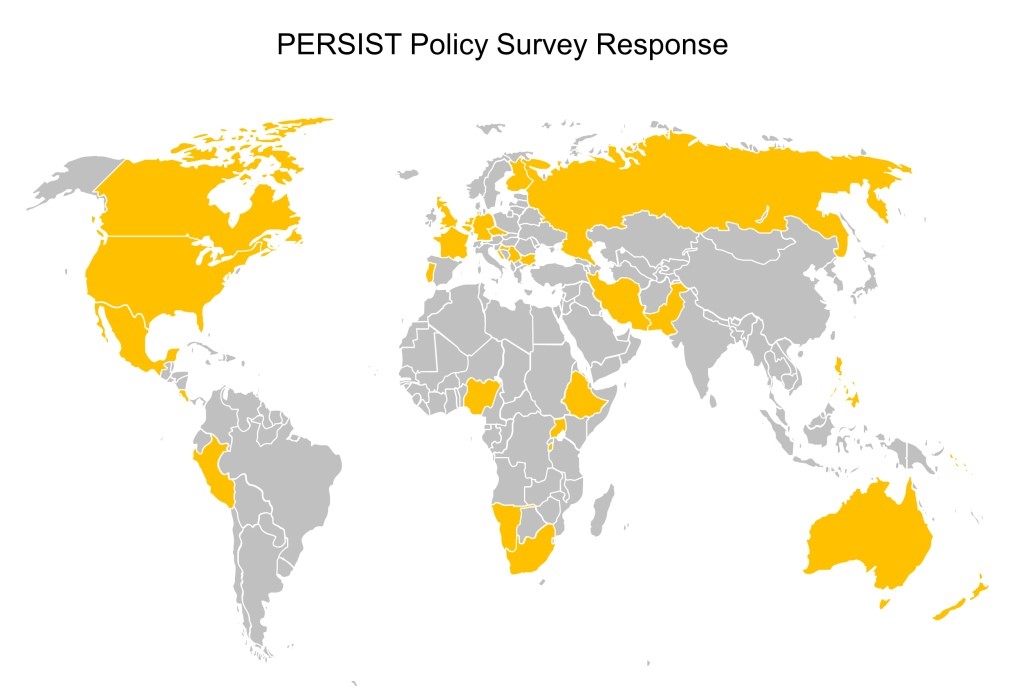Robert Buckley works for the National Archives of the UAE in Abu Dhabi
PERSIST: A Global Dialogue on Digital Preservation
To those unfamiliar with PERSIST, it is a project within the UNESCO Memory of the World Programme, whose International Advisory Committee is currently chaired by Dr. Abdulla Alraisi, Director General of the National Archives of the UAE. The Memory of the World (MoW) Programme was created in 1992 to facilitate preservation of the world’s documentary heritage and to assist in providing universal access to it.
When my colleague Hamad Al Mutairi, Director of the Archives Department here at the National Archives of the UAE, and I first sat down to discuss this contribution, he drafted the outline of a general digital preservation policy. We realize that having a policy for digital preservation or digital continuity is not a unique thing; numerous institutions have one already, suitably adapted to the environment in which they operate. What is different is that the effort here is partly stimulated by our participation in the PERSIST project.
The PERSIST project is essentially a digital component of the MoW programme. It is an outgrowth of the The Memory of the World in the Digital age Conference held in Vancouver in 2012. PERSIST aims to address the challenges of long-term digital preservation and the risks of losing access to part of our digital heritage. Partnering with UNESCO on PERSIST are the International Council of Archives (ICA) and the International Federation of Libraries Associations and Institutions (IFLA).
It is the connection to UNESCO that distinguishes PERSIST from other digital preservation projects. Overcoming the challenges of digital preservation and achieving digital sustainability requires the active participation of the ICT industry, governments and memory institutions. UNESCO has the convening and advocacy power on a global level to bring these parties together.
One of the mechanisms UNESCO has for engaging its Member States on digital preservation is the UNESCO Recommendation concerning the preservation of, and access to, documentary heritage, including in digital form, adopted in November 2015. The Recommendation serves as a robust normative framework for the preservation efforts of memory institutions worldwide, particularly in environments where documentary heritage could be at risk. While UNESCO Recommendations are not binding in the same way as Conventions are, Member States nonetheless are expected to report back on the progress they have made on implementing the Recommendation.
With the recognition that preserving digital objects is not just a technical challenge, the PERSIST project is split into three working groups: Technology, Content and Policy. The Technology WG is focused on engaging the ICT industry to establish services for registering, hosting, and monitoring legacy software with a view to enable preservation, access, and the continued use of digital artefacts. The Content WG has issued the UNESCO/PERSIST guidelines that memory institutions can use to develop their own policies on the selection of digital heritage for long-term preservation. The Policy WG has focused on what Member States need to implement policy measures related to the “digital form” in the 2015 Recommendation. Our attention here will be on the Policy WG.
One of the first things the Policy WG did was commission a survey to gain insight into digital preservation activities at the national level. Responses were received from 33 countries, with multiple responses from some.

Eighty-nine percent of respondents considered digital preservation strategies and policies to be an intrinsic task of the national or federal government. While most respondents said their country did not have a national strategy for digital preservation, a majority cited domain-specific strategies for memory institutions. When it came to specific actions at the national level, a majority of respondents supported national strategic planning, a national infrastructure programme or raising awareness among stakeholders, with several citing relevant activities in their countries that could serve as exemplars and models for similar activities elsewhere. The full report on the survey is available at https://unescopersist.org.
So what’s next? Two things, but first we should recognize the interplay between the institutional, national and global levels when it comes to setting development goals, establishing priorities, defining standard-setting instruments (such as laws and policies) and then implementing the programmes that realize and comply with them. For example, technology can transcend international borders, but its application and use are subject to national rules which can vary from country to country, such as the controls on the information security technology for protecting digital assets.
The first thing is to engage policy makers, helping them make the connection to the seemingly technical subject of digital preservation and then appreciate the need for it at all levels, especially the national. For this we have in mind what we have been calling the Digital Preservation Starter’s Guide, explaining the how’s and why’s of digital preservation, reinforced with stories of what happened when digital preservation was successfully implemented (and when it wasn’t or was neglected). Here there is an opportunity to build on and re-purpose existing resources; the first that comes to mind is the DPC Digital Preservation Handbook.
The second is to provide guidelines for implementing the digital aspects of the UNESCO Recommendation, which urges Member States to consider their documentary heritage as an invaluable asset, which most already do, and to apply this perspective to national legislation, development policies and agendas. With UNESCO and its partners, PERSIST including the Policy WG would work to get its outputs in the hands of agents to establish the strategic and policy guidelines that would provide the institutional and national frameworks where they are needed for the preservation of digital documentary heritage.
